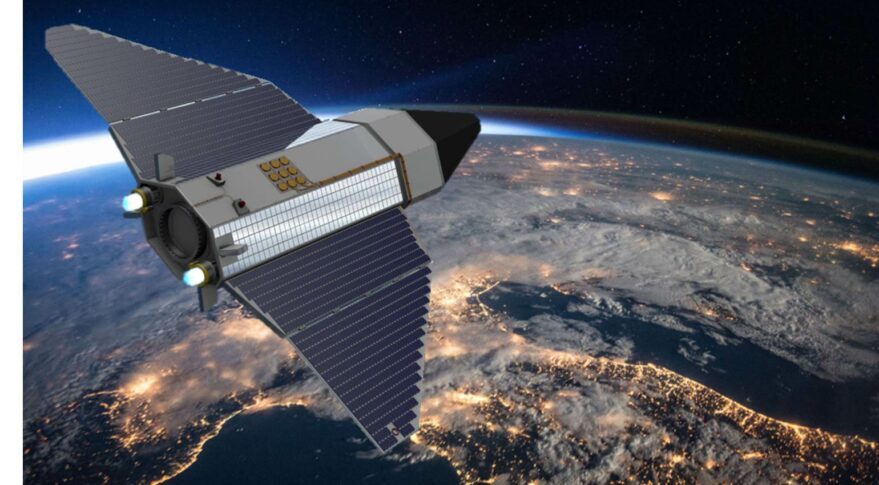20.07.2022

Thales Alenia Space says Skimsat will be compatible with launchers that are designed to send small satellites to orbits higher than VLEO. Credit: Thales Alenia Space
TAMPA, Fla. — The European Space Agency has awarded funds to develop a demonstrator for Skimsat, a small satellite platform designed to operate in very low Earth orbit (VLEO).
Europe’s Thales Alenia Space said July 19 it had secured 2.3 million euros ($2.4 million) in ESA funding to advance its design of a satellite capable of operating in orbit below 300 kilometers.
The funding includes an 800,000 euro study contract for a demonstrator that would use electrical propulsion to compensate for air drag at these low altitudes, which promise sharper resolutions for Earth observation applications.
The company secured the funds in partnership with QinetiQ, a British aerospace company planning to provide altitude and orbit control systems (AOCS), among other capabilities for the platform.
Their one-year study, led by Thales Alenia Space’s U.K. subsidiary and QinetiQ’s space division in Belgium, includes the selection of payloads for a future Skimsat mission.
Nigel Towers, head of sales strategy and marketing for Thales Alenia Space in the U.K., did not give a potential launch date for Skimsat, but said the study contract enables the companies to define the mission and platform concept.
The study funds were awarded under ESA’s Discovery Preparation and Technology Development (DPTD) activities, and Towers said via email that Skimsat also received approval for 1.5 million euros “for predevelopments.”
Skimsat “stands to completely change the Earth observation market,” according to Andrew Stanniland, CEO of Thales Alenia Space in the U.K.
Stanniland said in a statement that Skimsat challenges “the traditional use of high altitudes that avoid air drag” and will create a “new business model for high resolution imaging” through more cost-effective satellites.
Thales Alenia Space has previously secured funds for Skimsat from the British government as part of the platform’s role in the Quantum Accelerometer Climate Explorer (Q-ACE) mission.
Following the demonstrator, a Q-ACE consortium led by Thales Alenia Space’s British subsidiary plans to use Skimsat for a mission to measure the density of the Earth’s thermosphere to improve climate forecasts.
Q-ACE is also in very early stages of development and does not have a firm target launch date, Towers said.
VLEO, referring to orbits between 250 and 450 kilometers above the Earth’s surface, also promises speedier communications for operators able to compensate for air drag.
Multiple companies have been developing VLEO solutions amid growing interest from commercial players and national security agencies.
In May, SpaceX launched a satellite built by Blue Canyon Technologies for MIT Lincoln Laboratory in Lexington, Massachusetts, that aims to test operations in VLEO for several months.
Quelle: SN
